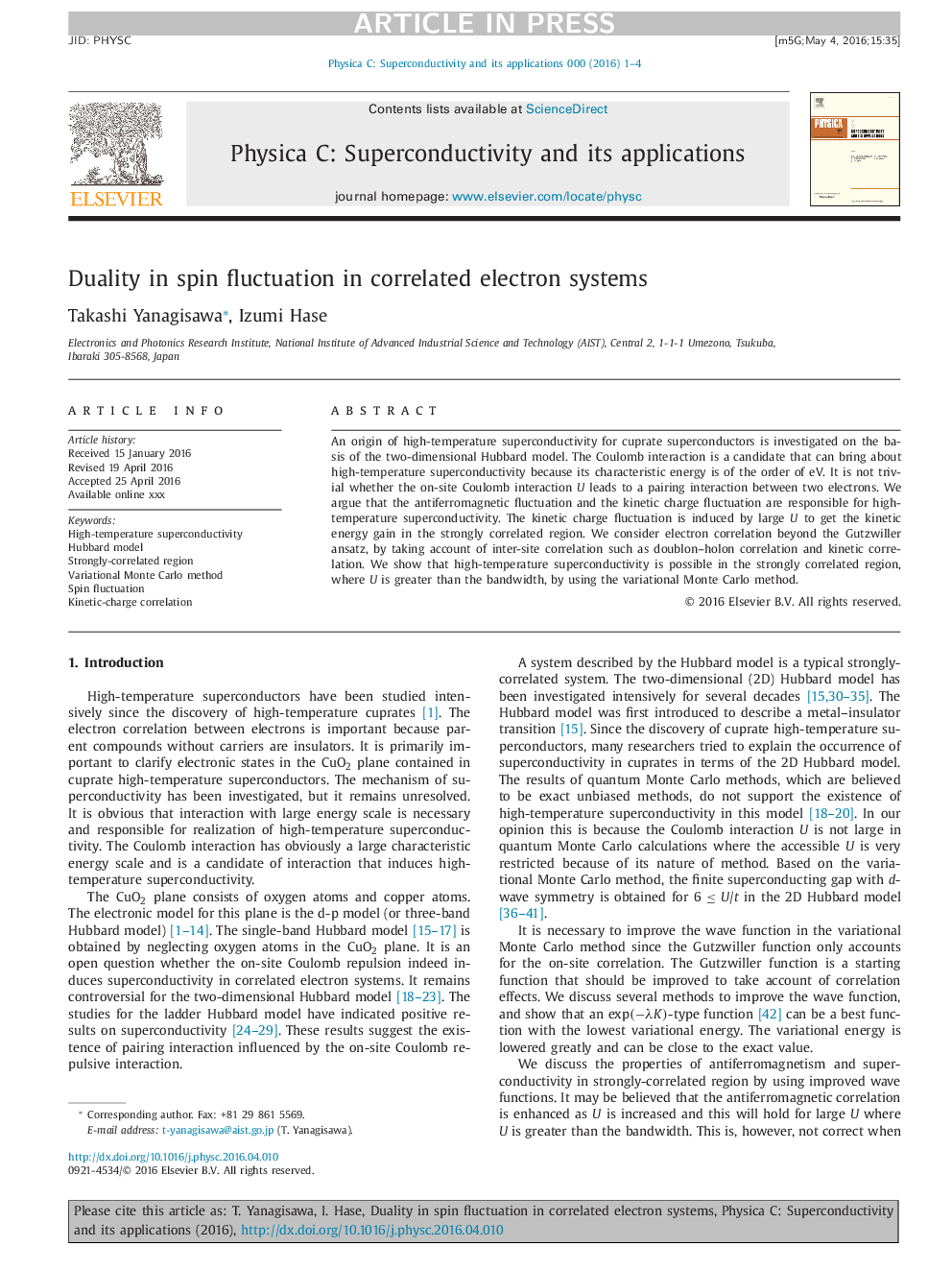| Article ID | Journal | Published Year | Pages | File Type |
|---|---|---|---|---|
| 5492447 | Physica C: Superconductivity and its Applications | 2016 | 4 Pages |
Abstract
An origin of high-temperature superconductivity for cuprate superconductors is investigated on the basis of the two-dimensional Hubbard model. The Coulomb interaction is a candidate that can bring about high-temperature superconductivity because its characteristic energy is of the order of eV. It is not trivial whether the on-site Coulomb interaction U leads to a pairing interaction between two electrons. We argue that the antiferromagnetic fluctuation and the kinetic charge fluctuation are responsible for high-temperature superconductivity. The kinetic charge fluctuation is induced by large U to get the kinetic energy gain in the strongly correlated region. We consider electron correlation beyond the Gutzwiller ansatz, by taking account of inter-site correlation such as doublon-holon correlation and kinetic correlation. We show that high-temperature superconductivity is possible in the strongly correlated region, where U is greater than the bandwidth, by using the variational Monte Carlo method.
Keywords
Related Topics
Physical Sciences and Engineering
Physics and Astronomy
Condensed Matter Physics
Authors
Takashi Yanagisawa, Izumi Hase,
